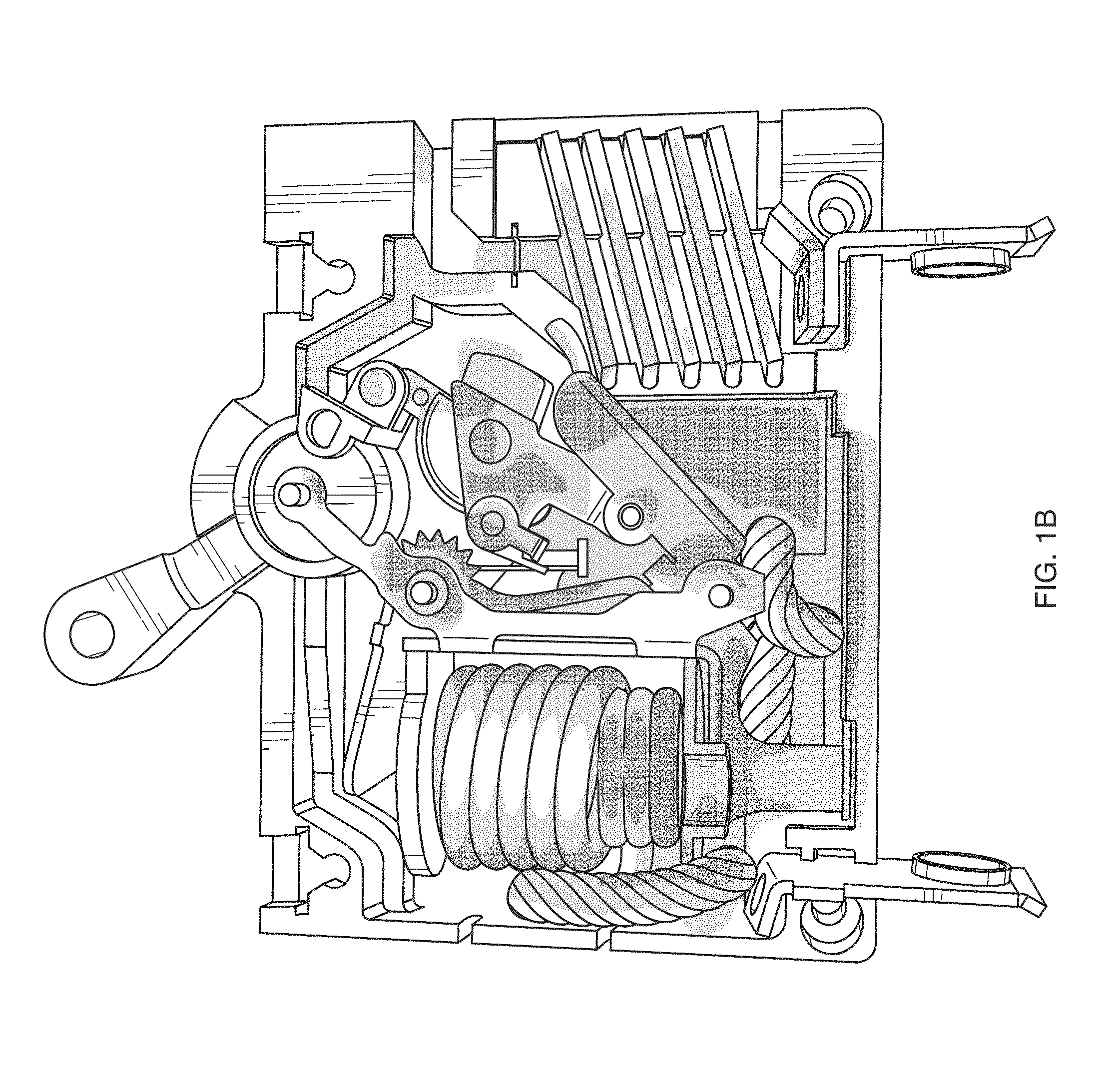Particulate and pressure redirection shield for an electric circuit breaker
a technology of electric circuit breakers and shields, which is applied in the field of shields or barriers for magnetic circuit breakers, can solve the problems of inacceptable fouling of such breaker components, and achieve the effects of facilitating the re-direction of pressurized air, and minimizing or eliminating the potential for gas
- Summary
- Abstract
- Description
- Claims
- Application Information
AI Technical Summary
Benefits of technology
Problems solved by technology
Method used
Image
Examples
example
[0098]A test was undertaken to illustrate and show the amount of particulate contamination that might occur with the trip mechanism, the sear pin and the upper armature for a breaker that has no shield and for a breaker including a shield according to the present invention. A pictorial view of a breaker with no shield is provided in FIG. 1. Reference also is made to FIG. 6, which shows a pictorial view of a magnetic breaker configured with a shield according to the present invention.
[0099]In this example, the length of the top surface is about 0.508 inches, the width of the second segment is about 0.109 inches, the width of the third segment is about 0.55 inches and the width of both the fourth and fifth segments is about 0.032 inches. It should be noted that manufacturing considerations in some cases dictated the dimensions for the width (e.g., minimum dimension necessary to allow bending of part). Also, the second and third segments are oriented so as to be essentially perpendicul...
PUM
 Login to View More
Login to View More Abstract
Description
Claims
Application Information
 Login to View More
Login to View More - R&D Engineer
- R&D Manager
- IP Professional
- Industry Leading Data Capabilities
- Powerful AI technology
- Patent DNA Extraction
Browse by: Latest US Patents, China's latest patents, Technical Efficacy Thesaurus, Application Domain, Technology Topic, Popular Technical Reports.
© 2024 PatSnap. All rights reserved.Legal|Privacy policy|Modern Slavery Act Transparency Statement|Sitemap|About US| Contact US: help@patsnap.com










